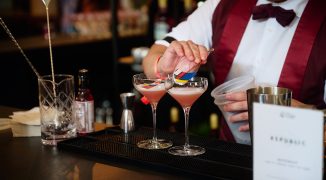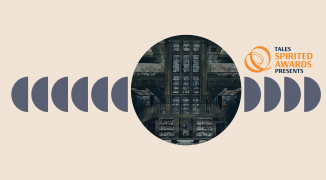Imagine you’re traversing the sweeping, rolling hillsides and vineyards of France. The first thing that comes to mind may be washing down those beautiful vistas with a luscious glass of red wine, perhaps a Bordeaux or Rhône. Yet, go to the right place and those vineyards aren’t being used for wine at all, but instead, Cognac.
An Introduction to the Cognac Region
The city of Cognac is near France’s west coast, north of Bordeaux. Surrounding the city is Cognac’s Appellation of Origin, which is then divided into six regions, or crus: Grand Champagne, Petit Champagne, Borderies, Fins Bois, Bons Bois, and Bons Ordinaires.
According to the Bureau National Interprofessionnel du Cognac (BNIC), there are about 180,000 acres of vineyards in the Cognac region, with 95 percent of those grapes going to Cognac production.
The grapes filling those vineyards are predominantly Ugni Blanc, and 98 percent of Cognac is made from that varietal, while two other white grapes, Folle Blanche and Colombard, may also be used. The wine produced from these grapes is highly acidic and low in alcohol, between 7.5 and 10 percent.
When you’re touring, say, the American Whiskey Trail, the distilleries themselves are always an essential part of the attraction, if not the main focus. The warehouse facilities are also always located at the same site. This is not the case while touring Cognac — here, the cellars are the more likely focus of your visit. The major Cognac houses offer different experiences, and some may offer several stops, taking you to a distillery and cellar, or a cellar and a museum, or another tag team of destinations.
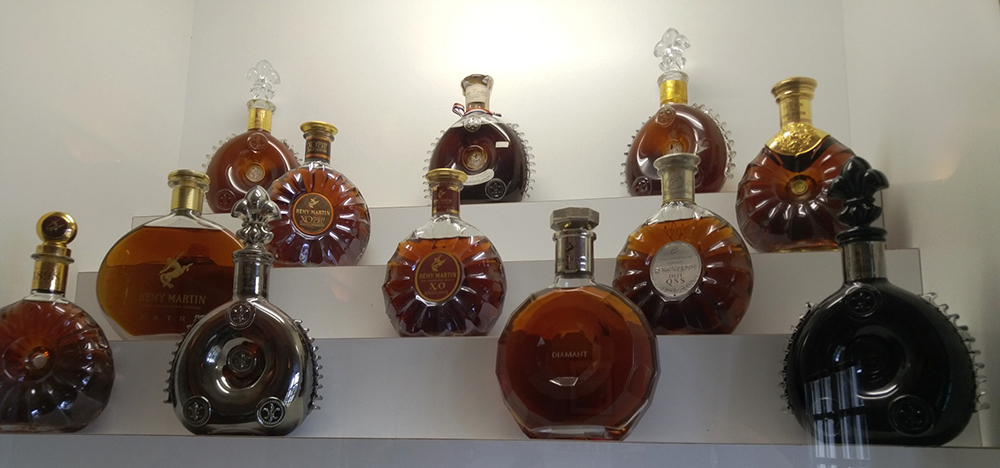 Visiting a major Cognac house may involve seeing the brand’s museum, with displays of Cognac they’ve made throughout their history. Photos by Jake Emen.
Visiting a major Cognac house may involve seeing the brand’s museum, with displays of Cognac they’ve made throughout their history. Photos by Jake Emen.
The actual distilleries, however, are not always part of the experience. This is largely due to the nature of Cognac’s production, where there may be hundreds or even thousands of small distillers producing a particular brand’s eaux de vie. These small producers are known as “boilers of the region,” or bouilleurs de cru, and are essentially family farms.
Also known as winegrowers, they produce on contract to one or several of the larger houses, known as merchants or professional distillers, and they follow that brand’s particular guidelines and specifications. They can grow the grapes, make the wine, do the distillation, and even begin aging, or any combination or step along the way that the larger brand desires.
Some of the large brands handle a healthy chunk of the distillation at their own facilities, while others distill as little as possible in-house. Consider Hennessy, the largest brand, which distills only 7 percent of their overall production, doing so simply to serve as instruction to the 1,500 winegrowers they contract to handle the lion’s share of the distillation.
Also consider that by regulation, Cognac stills have a maximum allowable size of 2,500 liters for the second distillation. Therefore, if large brands wanted to do all of their own distillation, they’d need massive numbers of these stills to handle production.
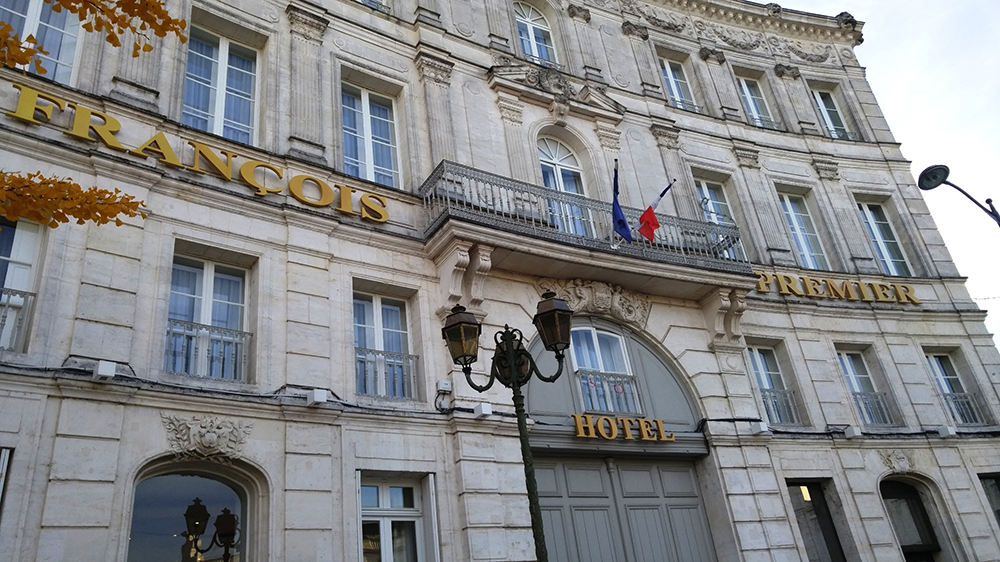 Situated in the heart of Cognac, a stay at the Francois Premier Hotel will place you in a central location to visit the major Cognac distilleries throughout the French countryside.
Situated in the heart of Cognac, a stay at the Francois Premier Hotel will place you in a central location to visit the major Cognac distilleries throughout the French countryside.
Planning Your Visit
Cognac distillation season lasts from October 1st through March 31st, which is when those who are interested in the production process will see the most action. Factoring in time for grape harvest, wine fermentation and settling, distillation for most producers typically begins closer to the start of November and lasts for much of the next three to four months.
Unless you’ve already been busy touring nearby Bordeaux, then your easiest option is to fly through Paris. From there, you can continue via train to Angoulême.
The comfortable ride from the Montparnasse station to Angoulême takes less than three hours. From there, you’ll be a 30 minute drive from the city of Cognac, which you can make your base of operations for your stay. There are several hotels in the city, and in some cases, you may be able to arrange accommodations directly with one of the spectacular chateaus belonging to the Cognac houses themselves.
Before heading into Cognac, though, your first stop will actually be on the way.
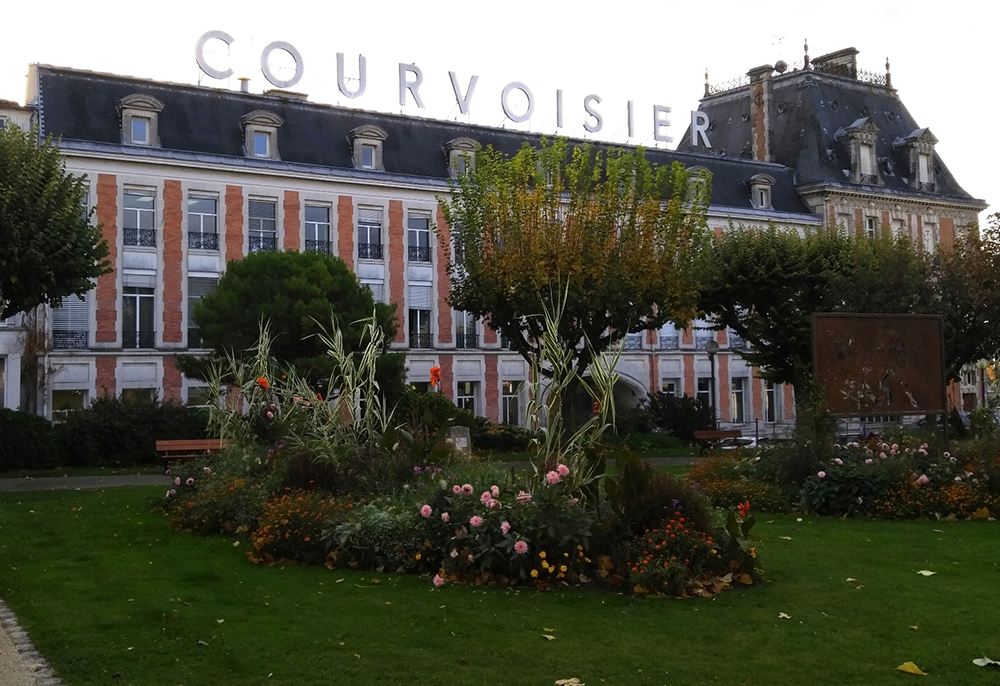 At the Château de Courvoisier in Jarnac, you’ll find their museum, as well as their oldest cellar, Chai Renard.
At the Château de Courvoisier in Jarnac, you’ll find their museum, as well as their oldest cellar, Chai Renard.
Courvoisier
Courvoisier is headquartered in Jarnac, and it’s a convenient place to begin your tour of the region, as it’s situated between the train station and the city. As a historical note, it’s also the birthplace of François Mitterrand, France’s president from 1981 to 1995.
One of Courvoisier’s main warehouse facilities is in La Belloire, just outside of Jarnac, while their Jubert distillery is in nearby Chateauneuf. At that site, they have 28 2,500-liter pot stills, which are capable of handling roughly 20 percent of their annual 60,000 hectoliters of pure alcohol production.
Courvoisier emphasizes the onion shape of their chapiteau, the top component to the pot still, as instrumental to their house’s style. The majority of their production is from Fins Bois, although they utilize other regions as well.
The Château de Courvoisier in Jarnac is nestled next to the La Charente river and dates back to the 1870s. It’s the site of their museum, as well as their oldest cellar, Chai Renard.
Courvoisier offers a number of different tours, including various combinations of the above sites and additional experiences.
 Founded in 1715, Martell is the oldest of the major Cognac houses and the longest continually operational. It proudly celebrated its 300th birthday this year.
Founded in 1715, Martell is the oldest of the major Cognac houses and the longest continually operational. It proudly celebrated its 300th birthday this year.
Martell
Martell is in the midst of its 300th birthday celebration. Founded in 1715, it’s the oldest of the major Cognac houses and the longest continually operational.
The Martell Visitor’s Center offers guided tours through several different cellars as well as their archives, with handwritten letters, ledgers and artifacts dating back to the brand’s earliest days.
In Cognac, the special cellars where the oldest eaux de vie and Cognacs are kept are called, simply, “paradise.” At Martell’s paradise, Chai Jean Martell, there are eaux de vie stretching all the way back to 1802. Part of a particular visit experience may include tastes of an eau de vie from 1848, aged for 65 years before being moved from the barrel to a glass demijohn for safekeeping, and 1875, aged for 49 years in the barrel.
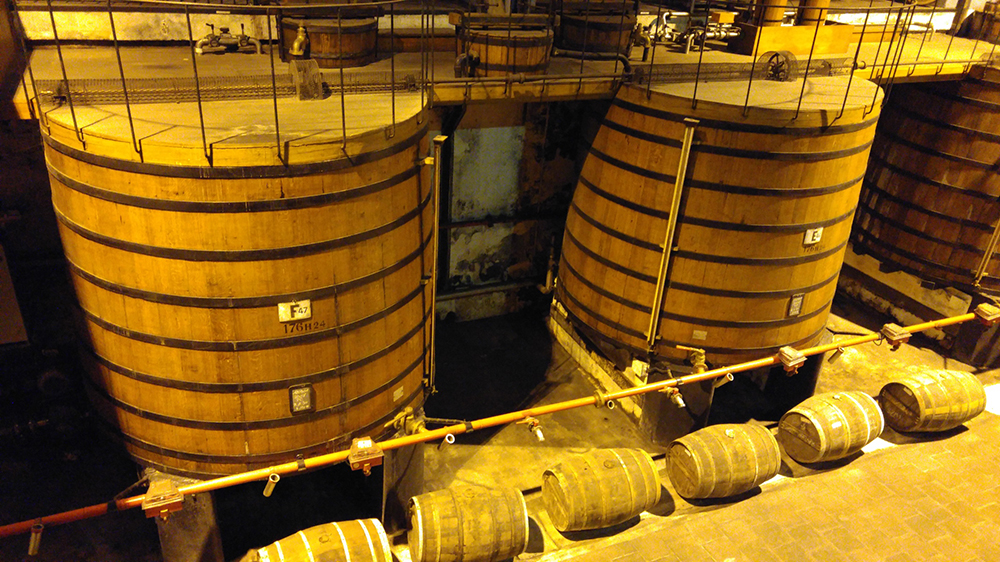 Martell uses oak from Tronçais, as opposed to Limousin, to age their cognac.
Martell uses oak from Tronçais, as opposed to Limousin, to age their cognac.
Martell uses oak from Tronçais, as opposed to Limousin. Their house style includes an emphasis on Borderies, and they utilize more than half of that cru’s overall production. Martell distills about 40 percent of their overall 80,000 HPA annual production, using two large facilities.
The Château de Chanteloup has been Martell’s house since 1838. Hidden away on the property is a belvedere viewing point, and another special cellar, dedicated to producing the premium Martell Chanteloup Perspective release.
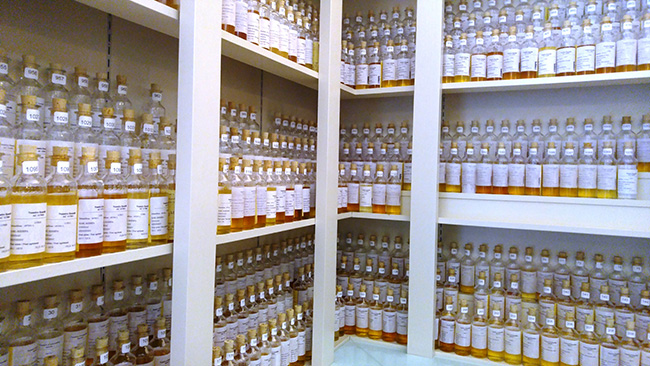 At Hennessy’s headquarters, you can see bottles of Cognac produced over their 250 years of production.
At Hennessy’s headquarters, you can see bottles of Cognac produced over their 250 years of production.
Hennessy
Hennessy‘s headquarters are located in the city of Cognac. The brand is celebrating their 250th anniversary this year, for which they unveiled their Hennessy 250 premium release. When it comes to Cognac, Hennessy is the big dog on the block, accounting for 46 percent of all Cognac production.
Their offices, including the home of their prestigious tasting committee, are located on one side of the La Charente river, while some of their cellars are directly across the river banks. Overall they have 50 warehouses, with 14 new ones planned for the next five years. Hennessy’s most precious cellar is Fondateur, the Founder’s Cellar, where the oldest eau de vie still maturing in the barrel dates to 1893.
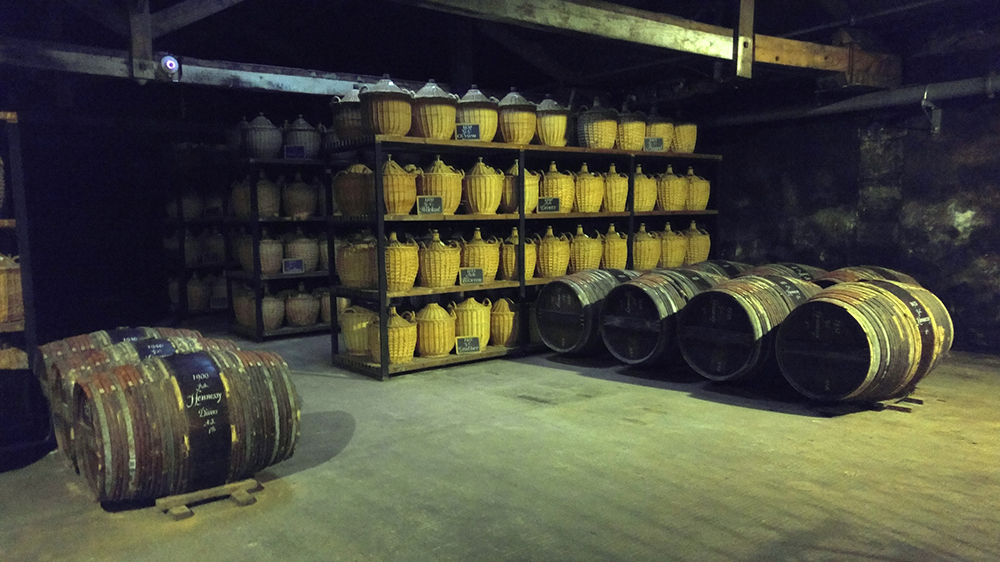 Hennessy is celebrating their 250th anniversary this year, for which they unveiled their Hennessy 250 premium release.
Hennessy is celebrating their 250th anniversary this year, for which they unveiled their Hennessy 250 premium release.
A visit to Hennessy may also include a trip to their repair cooperage, La Sarrazine. The Hennessy chateau, the Château de Bagnolet, is just outside the city.
Hennessy is in the midst of redoing their tour experience, and plan on unveiling new tours with various options in 2016.
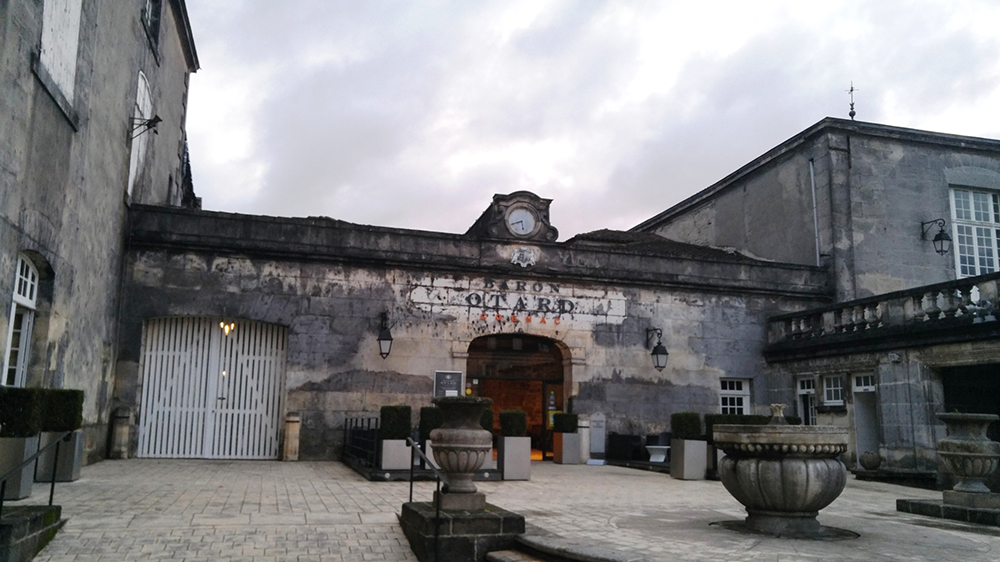 The Château de Cognac is home to Baron Otard, established in 1795, as well as the far newer D’USSÉ.
The Château de Cognac is home to Baron Otard, established in 1795, as well as the far newer D’USSÉ.
Château de Cognac
The Château de Cognac is home to Baron Otard, established in 1795, as well as the far newer D’USSÉ. Baron Otard is unavailable in the United States, while D’USSÉ was released just several years ago, and is made specifically for the American market.
The Château itself is the actual 11th century castle that protected the city of Cognac. It’s been partially destroyed twice, including during the French Revolution. Its walls are the old walls of the city, its cellars, scattered throughout the castle, are former armories, jail cells and secret passageways.
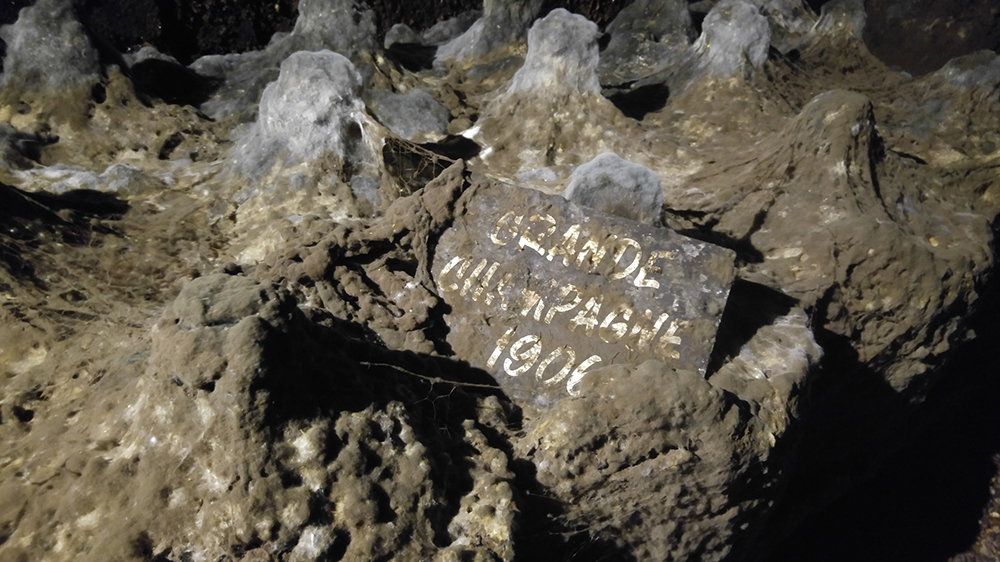 The Baron Otard demijohns, the oldest of which date to 1820, are hidden beneath thick layers of mold and spider webs.
The Baron Otard demijohns, the oldest of which date to 1820, are hidden beneath thick layers of mold and spider webs.
Their oldest vaults, underground and adjacent to the river, include the most humid Cognac cellars, or spirit’s warehouses of any kind, that can be found. One such dank vault’s walls are covered with mushrooms; its demijohns, the oldest of which date to 1820, are surrealistically hidden beneath thick layers of mold and spider webs.
Today, they store nearly 20,000 barrels right in the castle. Open a door and you’re bound to stumble upon a cellar. While they also have other warehouses, all of their barrels will get at least one turn in the castle.
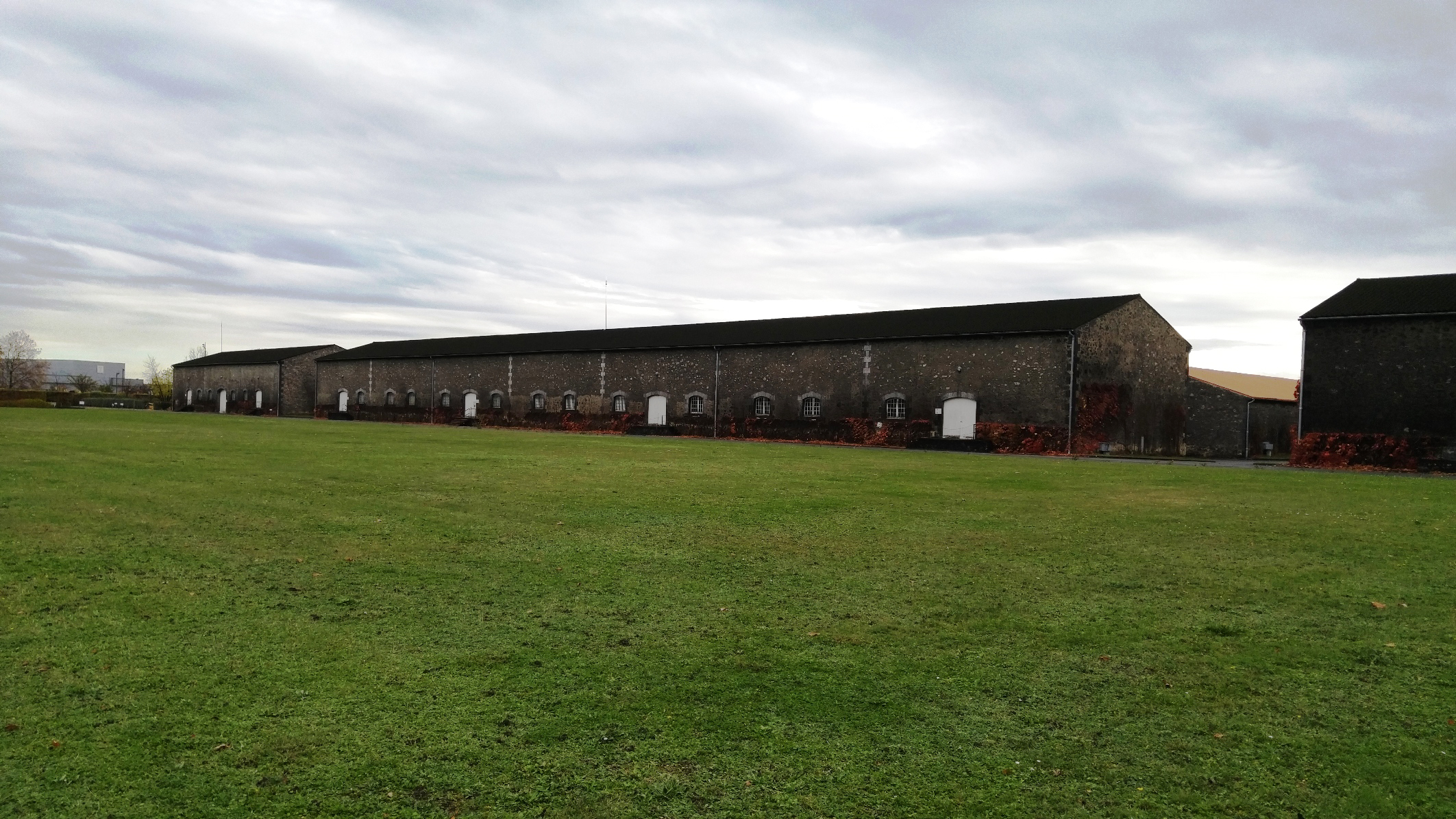 The Rémy Martin cellar grounds are located in the small village of Merpins.
The Rémy Martin cellar grounds are located in the small village of Merpins.
Rémy Martin
Rémy Martin was founded in 1724, and today uses only grapes from Grand Champagne and Petit Champagne, a switch they made in 1958. Any Cognac made with at least 50 percent Grand Champagne and Petit Champagne garners the additional Fine Champagne notation. Another component to Rémy’s house style is that they distill with the lies, the wine sediment, rather than removing it.
Their cellar grounds are located in Merpins, a short ride out of town. There you’ll find their visitor’s experience and tasting room. In the city of Cognac, you’ll find the Rémy Martin Le Club, another stop used for certain events, tastings and parties.
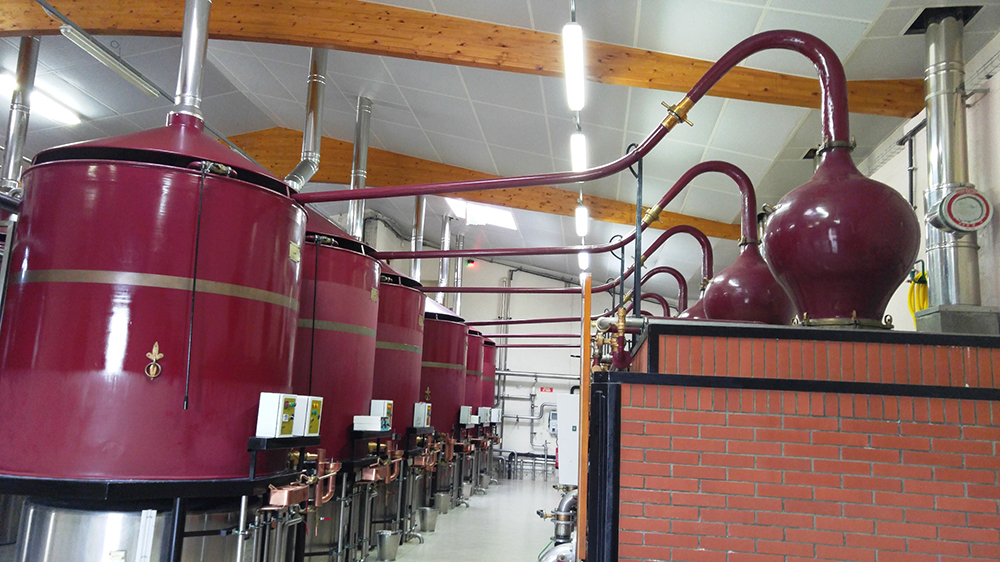 Rémy Martin cognac sets itself apart distilling with the lies (the wine sediment), rather than removing it.
Rémy Martin cognac sets itself apart distilling with the lies (the wine sediment), rather than removing it.
Rémy Martin’s main distillery is in Touzac, about 30 minutes outside of Cognac. They produce up to 70 percent of their production, which (as mentioned) is quite high for the industry.
If you stopped in Jarnac for Courvoisier on the way into town, you could hit Touzac on the way out, as you head back to the train station. Alternatively, they offer a wide range of different tours and experiences incorporating multiple stops and all levels of their production process.



